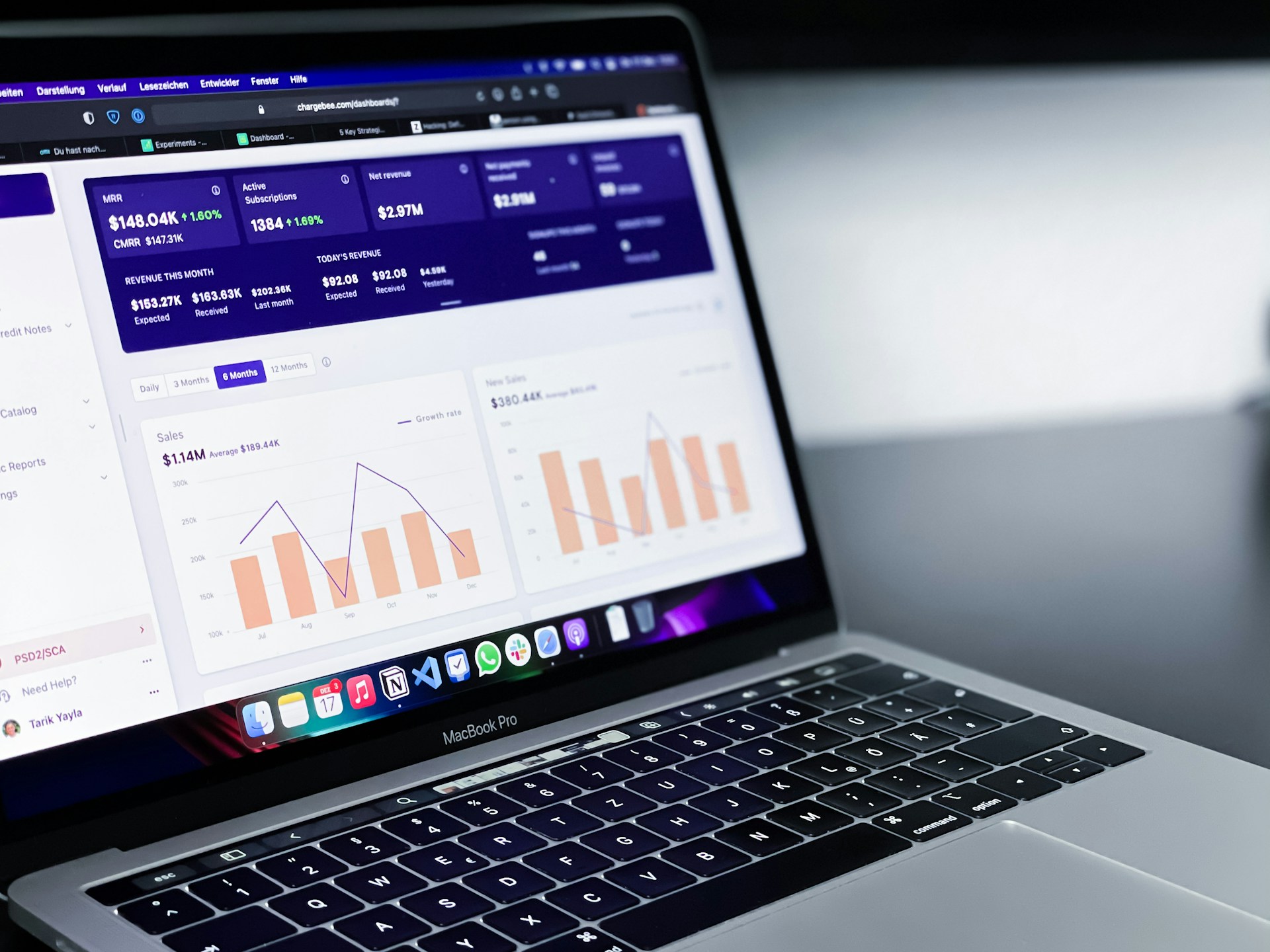How to
How to Change Brake Fluid

Through the braking circuit, your car’s brake fluid transmits your pressure on the brake pedal to all four wheels. It constitutes an essential safety element. But this liquid deteriorates over time and becomes less effective.
It is then a matter of completely bleeding the braking circuit: the old brake fluid is released through the four wheel brake calipers, replaced by the new brake fluid poured into the appropriate reservoir, without any bubbles. air does not enter. It is a simple operation but requires the presence of an assistant.
Here’s how to change your car’s brake fluid .
1.Get the Right Brake Fluid
Identify the right brake fluid for your car
- There are several brake fluids, classified according to their DOT (Department Of Transportation) rating.
Check the procedure on your RTA
Depending on the car, the procedure for changing the brake fluid may have certain specificities. It is therefore important to refer to your RTA before starting.
- For vehicles equipped with ABS, there is sometimes additional action to be done before replacing the brake fluid (for example, disconnecting the battery).
Important : if you empty the ABS circuit by mistake, you will have to take your car to the garage!
- For some cars, the brake fluid is replaced with the engine running. Refer to the RTA to find out.
2.Access the bleeder screws behind the wheels
To access the bleeder screws on the four-wheel brake calipers, there are 2 possible solutions.
Case 1: access the bleeder screws without removing the wheels
- Steer the wheels of your vehicle hard.
- Slide under the car and access the bleeder screws without removing the wheels. If you have a pit, this will be even easier.
Good to know : choose this solution if possible. This avoids the risk of putting the car on jack stands because there is always a danger for the mechanic if a jack stand loosens or tips over.
Case 2: remove the wheels
It is sometimes necessary to remove the wheels to access the brake calipers and their bleed screws.
- Place your vehicle on a flat surface, handbrake on, gear engaged.
- Remove the hubcaps.
- Loosen the wheel nuts one turn, using a wheel nut wrench or a cross wrench, which makes disassembly easier.
- Block the opposite wheels (front wheels when you remove the rear) with chocks.
- Use a jack to raise the car, place a jack stand next to it, and place the car on the jack stand, loosening the jack a little.
- Loosen the bolts completely and remove the wheel.
- Do the same for each wheel.
3.Fill the reservoir with new brake fluid
- Wear protective gloves and take a cloth with you to wipe off any traces of brake fluid.
Important : Brake fluid is very corrosive. Avoid contact with your skin and be careful not to leave any product on the paintwork or plastics of your car.
- Under the hood, locate the brake fluid reservoir.
Good to know : located above the master cylinder, the reservoir is generally on the driver’s side and filled with a dark liquid.
- Remove as much of the used brake fluid as possible with a pipette, syringe or bulb.
- Then replace it with new brake fluid.
- Before starting the brake bleeding, make sure that the brake fluid reservoir is filled to the maximum.
4.Determine the order of bleeding the wheels
You will bleed the calipers of all four wheels one after the other. You must first determine the order of bleeding the wheels.
Case 1: apply the Z diagram
Generally, you start with the wheel farthest from the master cylinder. The classic diagram is therefore:
- right rear wheel;
- left rear wheel;
- right front wheel;
- left front wheel.
This order is called the Z pattern.
Case 2: Follow another pattern
Brake bleeding can also be done in an X pattern or in another order.
Check the order recommended in the automobile technical review (RTA) for your car before starting the operation.
5.Bleed the first brake caliper
Good to know : for purging, ask someone for help. She will press the brake pedal while you bleed the brake caliper from the wheel.
Start by bleeding the first wheel caliper in the order you determined in the previous step.
Install the bleeder hose on the first wheel
- Clean the brake caliper.
- Place a container on the ground with a few centimeters of new brake fluid at the bottom.
- Remove the rubber cover on the bleeder screw.
- Place a clear rubber hose, such as an aquarium hose, over the bleeder screw. The other end of the hose goes into the brake fluid at the bottom of the container.
Perform the purge
- Hold a spanner ready to open the bleeder screw.
- Have the second person depress the brake pedal gently, then hold on to it when it becomes hard.
- Open the bleeder screw by turning a quarter turn. Used brake fluid flows into the hose.
Good to know : during the flow, the brake pedal depresses. Your assistant maintains his support.
- Ask him to pump the pedal two or three times and then keep it depressed.
- When pumping, make sure the jar is always sufficiently full. Replace new brake fluid in the reservoir approximately every 3 pedal strokes.
Important : when the brake pedal is released, brake fluid from the master cylinder reservoir enters the circuit. You must therefore fill this tank to avoid air entering and having to start all over again.
- When clearer brake fluid comes out through the bleeder screw, close it.
- Your assistant can only then release the brake pedal.
Important : you must not release the front pedal as air may enter the circuit through the pipe. The few centimeters of brake fluid at the bottom of the container into which the pipe arrives are used to prevent this: if the pedal is released, it is fluid that will come up, not air.
- Empty the hose into your container before unplugging it.
6.Bleed the brake fluid from the following wheels
Repeat these operations for the other 3 wheels, respecting the bleeding order previously established.
- Place the bleeder hose onto the bleeder screw.
- Open the bleeder screw.
- With the help of your assistant pressing the brake pedal, bleed the caliper. Make sure the jar is always full enough.
- Bleed the brake caliper until clear brake fluid comes out.
Good to know : there are brake bleeders that allow you to bleed without the help of a person, by putting the brake circuit under constant pressure.
7.Test your purge
- Once all four brake calipers have been bled and all bleeder screws have been tightened, depress the brake pedal again and check that no fluid is coming out.
- Then turn the four wheel hubs one by one by hand. Check that the hub stops suddenly when you press the brake pedal.
- Remount the wheels and test the braking again in real life. First start driving a few dozen meters.
- Finally, collect and throw the drained brake fluid into the recycling center.
Important : it is a very harmful substance for the environment. It cannot be poured into a sink or a trash can.

How to
Cracking the Puzzle: Discovering Roman Numerals That Multiply to 35

Welcome to the fascinating world of Roman numerals, where numbers are represented by letters in a system that has stood the test of time. Today, we embark on a journey to unravel the enigmatic puzzle of discovering which Roman numerals multiply together to equal 35. Get ready to exercise your brain and sharpen your problem-solving skills as we dive into this intriguing challenge!
Understanding Multiplication with Roman Numerals
Have you ever wondered how multiplication works when using Roman numerals? It may seem complex at first, but once you grasp the fundamentals, it becomes an intriguing puzzle to solve. Unlike our familiar Arabic numeral system, where multiplication is straightforward, Roman numerals require a different approach.
To multiply with Roman numerals, each letter carries a specific value: I equals 1, V equals 5, X equals 10, L equals 50, C equals 100, D equals 500, and M equals 1000. To calculate the product of two Roman numerals, simply add their values together according to the position they hold in the equation.
For instance, multiplying XXV by II would involve adding X (10) to itself twice (20) and adding V (5), resulting in XXXXVV, which simplifies down to LXXV or 75. This method may demand some practice but mastering it unlocks a fascinating world of mathematical possibilities within the realm of Roman numerals.
Factors of 35 and Possible Combinations
- Let’s dive into the fascinating world of Roman numerals and explore the factors of 35. When we talk about factors, we’re looking for numbers that can be multiplied together to give us a specific result—in this case, 35.
- The factors of 35 are the numbers that divide evenly into it without leaving a remainder. In other words, they are the building blocks that make up this unique number puzzle.
- To find possible combinations of Roman numerals that multiply to 35, we need to think outside the box. This requires creativity and a strategic approach to solving the problem at hand.
- By examining different pairs of Roman numerals and their corresponding values, we can uncover hidden patterns and relationships that lead us closer to cracking this intriguing puzzle.
- Stay tuned as we unravel more mysteries behind Roman numerals and discover innovative ways to tackle mathematical challenges!
Trial and Error Method for Solving the Puzzle
When faced with the challenge of discovering Roman numerals that multiply to 35, one method you can employ is the trial-and-error approach. This involves systematically testing different combinations of Roman numerals to find the solution.
Start by breaking down 35 into its factors—in this case, 5 and 7. Then, experiment with various Roman numeral representations for these numbers. For instance, V (5) multiplied by VII (7) equals XXXV (35).
It may take some time and patience as you test different combinations until you arrive at the correct answer. Remember, perseverance is key when using the trial-and-error method to solve puzzles involving Roman numerals.
Don’t be discouraged if your initial attempts don’t yield results; keep exploring new possibilities until you crack the code. Enjoy the process of uncovering hidden patterns within Roman numeral multiplication!
Alternative Methods for Solving the Puzzle
When faced with the challenge of finding Roman numerals that multiply to 35, there are alternative methods you can explore to crack the puzzle. One approach is to leverage prime factorization; breaking down 35 into its prime factors (5 and 7) can guide you in constructing the corresponding Roman numerals. Additionally, utilizing a systematic approach by listing out all possible combinations and eliminating those that don’t meet the criteria can help narrow down your options. Another method involves leveraging divisibility rules within Roman numerals to deduce potential solutions more efficiently. Thinking outside the box and approaching the problem from different angles may lead you to unexpected revelations in solving this intriguing puzzle.
The Importance of Critical Thinking in Problem Solving
When faced with a problem like finding Roman numerals that multiply to 35, critical thinking becomes your best companion. It’s not just about following a set formula; it’s about approaching the puzzle from different angles and exploring various possibilities.
Critical thinking allows you to break down the problem into manageable parts, making it easier to analyze and solve. It encourages you to think outside the box, consider unconventional solutions, and adapt your approach as needed.
By engaging your critical thinking skills, you can identify patterns, make logical deductions, and test hypotheses effectively. It challenges you to question assumptions, seek alternative viewpoints, and explore new strategies for tackling challenges.
In problem-solving scenarios involving Roman numerals or any other complex task, embracing critical thinking is key to unlocking creative solutions and achieving success.
Conclusion
As we wrap up our exploration of Roman numerals that multiply to 35, it’s clear that this puzzle is not just about numbers; it’s a mental exercise in problem-solving and critical thinking. By delving into the factors of 35 and experimenting with different combinations, we sharpen our analytical skills and enhance our ability to think outside the box.
The trial-and-error method may seem tedious at first, but it teaches us patience and perseverance as we navigate through various possibilities. Moreover, considering alternative strategies like prime factorization can offer new insights and approaches to cracking the code of Roman numerals.
What makes this puzzle intriguing is not just finding the solution itself but also appreciating the journey of discovery along the way. It challenges us to push past limitations, embrace creativity in our reasoning, and hone our cognitive abilities for future problem-solving endeavors. So keep exploring, keep learning, and let your curiosity drive you towards unlocking more mysteries hidden within numbers!
FAQs
1. Can Roman numerals be multiplied together?
Yes, Roman numerals can indeed be multiplied together. By understanding the values assigned to each numeral and applying basic multiplication principles, you can calculate products using Roman numerals.
2. What factors of 35 can result in a product using Roman numerals?
The factors of 35 are 1, 5, 7, and 35. To find combinations that multiply to 35 in Roman numerals, you need to explore different pairings of these factors while considering the unique properties of Roman numerical representation.
3. Is trial and error the only method for solving puzzles involving Roman numeral multiplication?
While trial and error is a common approach to solving such puzzles. There are alternative methods like prime factorization or systematic elimination that can also be efficiently utilized to crack the code of multiplying Roman numerals.
4. How important is critical thinking in problem-solving involving Roman numerals?
Critical thinking plays a crucial role in tackling challenges related to manipulating. Roman numerals for calculations. It involves analyzing information logically. Making connections between different elements and devising strategic approaches to arrive at solutions effectively.
5. Why is it beneficial to engage with puzzles like discovering Roman numerals that multiply to specific numbers?
Engaging with puzzles involving novel applications of mathematical concepts like multiplying Roman numerals not only sharpens your problem-solving skills but also enhances your understanding of numerical systems from different cultures throughout history.
Business
Beyond the Spreadsheet: Demystifying Predictive Analytics for Business Owners

Delving into the complexities of business operations in the digital era, paying attention to the significance of predictive analytics is necessary. As a vital tool capable of harvesting insights from vast amounts of data, it enables companies to react to market dynamics and proactively anticipate customer needs with predictive analytics. When effectively harnessed, this foresight opens doors to enhanced customer satisfaction, streamlined business processes, and a formidable competitive edge.
Understanding Predictive Analytics
At its core, predictive analytics forecasts probable future outcomes based on historical data patterns. Unlike traditional statistical methods that may only draw inferences from current or past data, predictive analytics uses cutting-edge technology, including machine learning algorithms, to process complex data sets and predict future events. The scope of predictive analytics molds it into a strategic asset that more and more businesses are beginning to realize and invest in. By applying predictive models, businesses are not just passively observing market trends; they’re sculpting their strategies around the potential trajectories those trends will follow.
The Mechanics of Predictive Analytics
The path to deploying a reliable predictive model is paved with sound data collection, meticulous processing, and algorithmic finesse. The journey begins with gathering diverse data streams encompassing consumer behavior, operational metrics, and market fluctuations. Once sieved for consistency and accuracy, the data undergoes processing via sophisticated statistical and machine learning algorithms. These algorithms evolve progressively through exposure to new and historical data, enhancing their predictive precision. The mechanics of these processes are dynamic, and they adapt as technology advances and businesses grow more nuanced in their analytics endeavors.
Benefits of Predictive Analytics for Businesses
The commercial advantages of predictive analytics are manifold. At the forefront is personalized customer engagement, which companies can predict and thus meet customer needs before the customer actively expresses them. This proactivity is a catalyst for deepened loyalty and more robust customer relationships. On the operational side, predictive analytics drives efficiency by forecasting inventory requirements, production needs, and workforce optimization, trimming unnecessary costs. There’s also the sphere of innovation and product development, where insights derived from predictive models can unearth latent market opportunities and guide businesses toward unexplored growth potential.
Real-World Applications of Predictive Analytics
The breadth of predictive analytics applications is striking, spanning industries that range from retail, where predicting purchasing patterns can revolutionize inventory management, to healthcare, where predictive models can save lives by foreseeing patient risks. In the finance sector, for instance, predictive analytics is pivotal in determining creditworthiness, thus influencing loan approvals and interest rates. This cross-industry adaptability underscores the technology’s intrinsic versatility and capacity to provide strategic direction. Insights drawn from predictive models have consistently proved their worth, translating into tangible benefits like cost savings, revenue growth, and enhanced customer satisfaction.
Challenges and Considerations in Implementation
Implementing predictive analytics has its challenges. Chief among them is ensuring the security and privacy of the data being used. Establishing strong governance and control mechanisms is crucial as companies navigate stringent data regulations and the ethical implications of data usage. Data accuracy and quality set the foundation for robust models. Businesses need them to make decisions rooted in good insights. Integrating analytics within existing business processes may require significant restructuring efforts, but the strategic advantages of such an alignment are undeniable.
Future Trends in Predictive Analytics
Predictive analytics stands at the cusp of a transformative leap, primarily driven by advancements in AI and machine learning technologies. The intricate relationship between these technologies is paving the way for more nuanced and accurate prediction models capable of dissecting complex behaviors and large data swaths with unprecedented precision. These improvements indicate a promising trajectory for companies aiming to future-proof their decision-making processes and indicate an emerging data-centric business paradigm.
Tools and Technologies Powering Predictive Analytics
With many options, businesses are often spoilt for choice when selecting the right predictive analytics tools. A range of platforms (from open source to proprietary ones) is available, catering to various business sizes and objectives. Decision-makers must balance functionality with scalability, considering the immediate needs and long-term strategic goals. These tools often come with feature sets designed for different skill levels, making analytics more accessible to professionals from varying backgrounds.
Measuring the ROI of Predictive Analytics
Business owners navigating the realm of data-driven decision-making must decipher the impact of predictive analytics initiatives on their bottom line. It entails measuring the tangible benefits of predictive analytics, such as improved operational efficiency, enhanced customer satisfaction, and increased revenue generation. By quantifying the ROI of predictive analytics, business owners can justify investments in technology and resources, optimize decision-making processes, and align strategic objectives with measurable outcomes. Leveraging key performance indicators (KPIs) and robust analytics tools, business owners can gain actionable insights into the effectiveness of predictive analytics initiatives, facilitating informed decision-making and driving sustainable business growth.
The Ethical Implications of Predictive Analytics
Business owners must prioritize ethical considerations throughout the entire lifecycle of predictive analytics projects, from data collection and model development to implementation and interpretation of results. Transparency and accountability are paramount, necessitating clear communication with stakeholders about how predictive analytics is used and its potential impact.
Moreover, proactive measures such as regular audits, diverse representation in data analysis teams, and ongoing ethical training can help mitigate ethical risks and ensure that predictive analytics is deployed relatively and equitably.
How to
Safeguarding Against Smishing: Understanding and Preventing SMS Phishing Attacks

As we navigate the forest of modern communication, we must be aware of the wolves in disguise. Smishing, a portmanteau of “SMS” and “phishing,” has emerged as a digital menace, cleverly adapted to our mobile-centric lives. Attackers use smishing to deceive individuals, deploying urgent or intriguing text messages designed to coerce the disclosure of confidential data. Understanding the intricacies of this trap is critical, and the multimedia approach makes smishing a threat that’s both pervasive and challenging to eradicate. In learning the facets of these deceptive messages, one can fortify their defenses against the sophisticated techniques employed by cybercriminals. A foundational knowledge resource for this cyber threat focuses on smishing safety.
What Is Smishing and How Does it Work?
Smishing is a deceptive practice that takes advantage of the widespread use of text messaging. These fraudulent messages mimic reputable entities such as banks, government agencies, or familiar services, luring recipients into revealing sensitive information like login credentials or financial data. Leveraging a sense of urgency—or the lure of a too-good-to-be-true offer—these texts encourage unsuspecting victims to click on malicious links, respond with private details, or even download nefarious software. Despite a general awareness of phishing via email, the insidious nature of smishing remains underestimated due to the perceived trustworthiness of SMS as a communication medium.
The Anatomy of a Smishing Attack
The structure of a smishing scheme is meticulously crafted to capitalize on human psychology. Attackers harvest phone numbers through various means—purchase from a list, use of random generation software, or extraction from compromised websites. The content of a smishing message typically creates a narrative that taps into emotional triggers: the fear of losing access to necessary services, the temptation of a windfall, or the concern for personal security. By pressing these psychological buttons, attackers aim to override rational thought processes, prompting recipients to act quickly and without their usual cautious judgment.
Recognizing the Signs of a Smishing Attempt
Spotting a smishing attempt is paramount for personal cybersecurity. Warning signs include texts out of the blue claiming you have won a contest you don’t recall entering, prompts to immediate action to resolve a crisis, requests for personal data, or links leading to obscure or odd-looking websites. These messages often contain grammatical errors, overly formal language, or use a generic greeting instead of your name—tactics that legitimate companies usually avoid. Awareness of these hallmarks can heighten skepticism towards unsolicited texts and encourage a practice of verification before response.
The Consequences of Falling Victim to Smishing
Becoming trapped in a smishing ploy can have severe consequences. Identity theft and financial fraud are expected outcomes, and the effects resonate far beyond the initial shock and personal security violation. Recent statistics on smishing show that victims can face an uphill battle in recovering their identities and securing their accounts. Moreover, businesses suffer when customer data is compromised, tarnishing reputations and eroding the foundational trust of commercial relationships. Smishing’s economic and emotional toll is non-trivial, and recovering from such an attack can be long and arduous.
Protective Measures Against Smishing Scams
Building a defense against smishing requires a multi-faceted approach. It begins with skepticism: do not take the authenticity of any text message at face value. Authenticate the sender through established channels, particularly if the message prompts action related to financial dealings or sensitive information. Secure your mobile devices with reputable cybersecurity software that can scan and block malicious content, including fraudulent text messages. In all spheres—personal, professional, and educational—foster a climate of awareness, promoting vigilance against the ever-evolving tactics of smashers.
Technology’s Role in Combating Smishing
Technological innovation remains a beacon of hope in an arms race against cyber threats. The emergence of intelligent algorithms capable of analyzing messaging patterns provides a glimpse into a future where smishing attempts can be neutralized proactively. These systems scrutinize messages in real-time, identifying and filtering out potential threats based on known smishing indicators. With deep learning and continual refinement of detection techniques, the promise of a robust defense against smishing grows stronger, offering a shield in the invisible battle waged in our inboxes.
Reporting and Responding to Smishing Attacks
Once paired with action, vigilance can stifle the success of smishing campaigns. If you encounter or suspect a smishing attempt, immediate reporting to authorities, such as your mobile carrier or consumer protection agencies, is essential. In the unfortunate event of interaction with a smishing text, a swift response is crucial—change potentially compromised passwords instantly, review financial statements for signs of unauthorized activity, and alert your financial institutions to fortify your accounts against possible intrusion. These steps can significantly diminish the potential damage inflicted by smishing scammers.
Public Education and Smishing: The Power of Awareness
Knowledge is power in the digital domain, and the educational aspect of smishing prevention cannot be overstated. Campaigns that raise awareness about smishing serve as crucial vehicles in disseminating valuable information to the public. Through these initiatives, individuals become equipped to identify, fend off, and report smishing tactics effectively, significantly reducing the attack vector for smishers. Combined efforts from cybersecurity firms, media, schools, and community organizations enhance the reach of these educational campaigns, fostering a cyber-savvy populace.
Looking to the Future: Smishing Trends and Predictions
With technology’s constant march forward, cybercriminals adapt and refine their tactics, continually pushing the boundaries of deceit. Anticipating new smishing methods requires vigilance and adaptation from all stakeholders—consumers, corporations, cybersecurity experts, and legislators. Proactive approaches, alongside stringent legal frameworks, can suffocate the proliferation of smishing attacks. By cultivating an environment of cooperation and sharing intelligence, we’re better primed to forecast, intercept, and dismantle smishing offensives, securing a safe digital ecosystem for all participants.
As the saying goes, forewarned is forearmed. Understanding the machinations of smishing prepares us to repel these invisible threats with informed decisiveness. The collective fortitude against smishing and other cybersecurity threats hinges on a foundation of education, technological advances, and responsible action. By equipping ourselves with the necessary knowledge and tools—and fostering a society that does the same—we can keep the integrity of our digital lives intact against those who prey upon it.
-

 Entertainment3 months ago
Entertainment3 months agoUnveiling the World of HDToday
-

 Technology3 months ago
Technology3 months agoUnveiling the Wonders of Teltlk Technology
-

 Technology3 months ago
Technology3 months agoÇebiti: Corporate Operations with an Integrated AI Platform
-

 Business3 months ago
Business3 months agoUnlocking Opportunities with GovDeals – Liquidity Services Marketplace
-

 Business3 months ago
Business3 months agoThe Ultimate Guide to High Risk Merchant Services
-

 Health3 months ago
Health3 months agoIlluminate Your Scans: Unveiling the Magic of Luminous Scans in Modern Imaging
-

 Entertainment3 months ago
Entertainment3 months agoRecord of the Mightiest Lord Chapter 1: Unveiling the Epic Saga
-

 Health2 months ago
Health2 months agoExploring the Benefits of wellhealthorganic Home Remedies



















